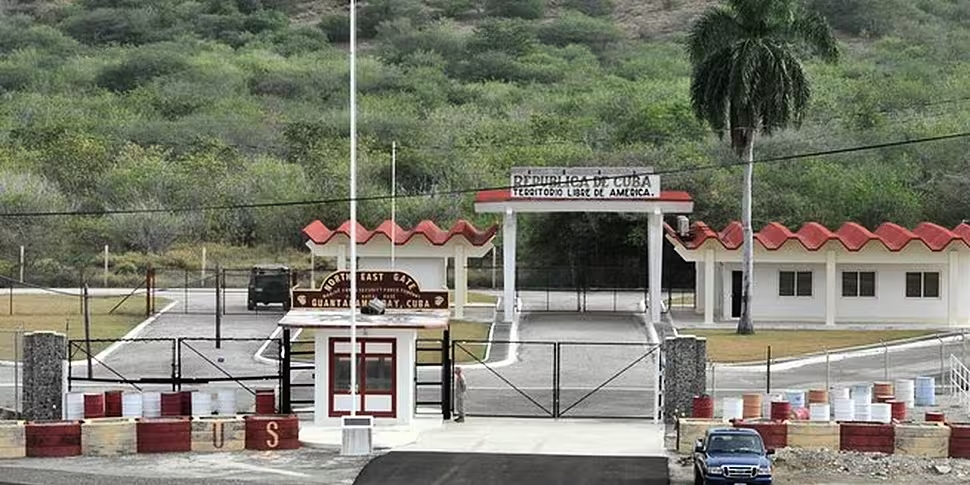For nearly 13 years, Mahamedou Slahi has been a prisoner at the US detention camp in Guantanamo Bay in Cuba – despite a US federal judge issuing an order for his release in March 2010. Three years in, he started keeping a diary, not merely of the miscarriage of justice perpetrated against him, but also a blackly comic look at his everyday life.
Just published for the first time, Guantanamo Diary is one of the most significant texts to come out of the ongoing War on Terror, and offers a riveting and profoundly revealing insight into the life of the detainees.
On today’s Moncrieff, Sean talks to Larry Siems, the translator who helped bring the book to the world, and gave a voice Mahamdou Slahi.
Tune in live today at 3.30pm: http://www.newstalk.com/player/
But how is it that the US ended up with a detention camp, one of the world’s most infamous prisons, located on the island nation of Cuba?
Guantanamo’s history with American forces stretches back more than 100 years, first beginning to emerge during the Spanish-American War. And it’s been a point of controversy ever since.
Cuba gained its independence from Spain at the end of the 19th century, and the crown’s colonies around the world began to break free during the final days of the Spanish empire. In 1898, the US took up the fight with its island neighbours, after the sinking of the USS Maine – caused by a mysterious explosion as it was docked in Havana Harbour on February 15th.
After the war ended, the US assumed control of Cuba and other territories like Puerto Rico and Guam, and three years after that, Cuba was granted its independence.
It came at a price, though; a treaty signed in 1903, and then re-signed in 1934, the US agreed to recognise Cuban sovereignty, provided that country’s authorities yield complete jurisdiction and control 19,621 acres of the island. The US rents out this piece of land at a cost of $3,386.25 (€3,196.18) annually, and the perpetual lease can only be rendered void if both nations agree to it.
Before it became a detainment camp, the base in Cuba did not offer the US any particularly strong strategic value, and mostly served military command as a warm-weather training base. And the local community is served by nearly 4,000 jobs for maintenance of the base, which pumps $7m into the economy.
The fate of the US base came under scrutiny following the rise of Fidel Castro in the 1950s, with repeated threats by the Communist leader that he would expel the US navy if American officials continued trying to destabilise the economy. In 1964, Castro had the water supply cut off in an act of defiance, but this only prompted the US to construct its own water and power supplies.
In the last decade of the 20th century, Guantanamo played host to its first non-military residents. More than 30,000 refugees who had tried to flee Cuba for the US, as well as 20,000 Haitians who’d tried to escape the country’s violent coup d’état, were pushed back to the quickly-erected camps while US authorities bided their time figuring out what to do with them all. A similar idea was considered for 20,000 refugees from the Balkans crisis of 1999, but it was ultimately decided Guantanamo Bay was just too far from Eastern Europe to make this viable.
Then, in the days following 9/11, a decision was made by the Bush administration to detains Al-Qaeda suspects in Cuba, and they’ve been there ever since. President Obama, two days after being sworn in back in 2009, issued an executive order to close the facilities in Cuba once and for all. At the time, he said it would take less than 12 months to wind down the detainment centre. More than six years later, 122 remain inside, and only one of their diaries has ever seen the light of day.









